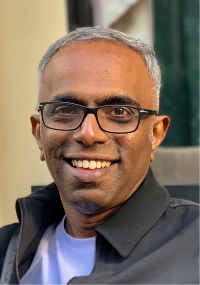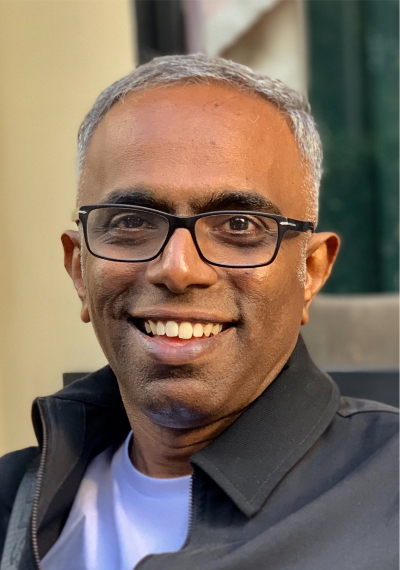Any domain attracts attention, interest and following in its ascendency. Facilitation or ‘process facilitation’ is entering that phase now. This interest fueled by some reflection prompts me to write about the characteristics that I have observed in facilitators from around the world who continue to inspire me. It was a random reflective scrawl that morphed into “Seven Characteristics of Awesome Facilitators”.
As the world continues to get fragmented by narrow walls and as existing modes of engineering change creak more than normal, facilitation is more than merely ‘sought after’. Over the last few years, I have seen this in action in the first person. Conferences and events like the International Association of Facilitators‘ recently concluded Asia and India conferences are freshly minted in memory. Both conferences were well crafted with meticulous care and depth. Both organising teams deserved the heaps of praise and applause they got. What couldn’t be missed, was the enormous interest and attention that facilitation as a domain is drawing. I met people from diverse industries, geographies, professions, interest groups etc, all seeking to know and learn more.
Even as I experienced top quality facilitation, I recalled some of the best facilitators in action. When I was amongst those being facilitated. Post the conferences, I was scribbling some notes about what stood out in the best of my experience. ( I continue to hear first-person accounts of great facilitation from the world over. Facilitators whose mastery I hope to experience someday). This post holds together seven aspects that are common in facilitators who I have experienced and admire. Of course, this is my list filled with my biases and notions of what construes to be the best. If you are a facilitator, I would encourage you to reflect, have a conversation and evolve your own list as well. For now, this is my list: Seven Characteristics of Awesome Facilitators.
1. Self Awareness:
Top notch facilitators realise that the journey within them is the real journey. They are well aware of their own mental models, preferences. and biases. They are keenly aware of where their true self-worth comes from. Often times, it comes from who they are and not from being a recipient of an award, certification, the position they hold in a hierarchy or even the kind of work they do. They are in the perpetual beta mode!
This is invaluable in my opinion, for they approach the position of a ‘facilitator’ with a degree of respect and an inclusive embrace. They are simple people with no airs. Not for them any ‘super manesque’ infallibility and Midas touches that sprinkle magic solutions. They don’t hanker for power and have any need to holler into a microphone. Wearing their vulnerability on their sleeve, they walk amongst the rest of us. Like the rest of us! This makes them endearing. There is something in them that draws people seeking out a conversation.
2. It is never about themselves:
That is a straight one, isn’t it? To be able to keep the light shining on the group that entrusts itself with a facilitator is an important ask. Great facilitators do this with effortless ease. An important distinction that I became aware of is the temptation to take the stage, in the garb of ‘shining the light on others’! Great facilitators ensure that the whole space belongs to the group and the community. They are part of the milieu.
‘Holding the space’ is a phrase that permeates several facilitator conversations. This piece has some good insights and it lists eight important tips to hold space for others. Amongst them, are “Don’t take their power away”, “Keep your own ego out of it”, “Give guidance and help with humility and thoughtfulness”.
Those are potholes that I catch myself falling often into. These jarred edges have sticky spikes.
3. Here and Now:
Presence and complete immersion with the group in front of them get great facilitators in a flow. Close your eyes and imagine an ‘ego-less’ state, where it’s not about showcasing oneself or the tools or the competence. A state where the sole focus of the group moving forward. It is a powerful idea that escapes capturing in its full essence here.
Just being present to the stated and unstated needs of the people in front can mean on the spot improvisation of well laid out plans. Sometimes, junking plans and taking different routes. It didn’t matter if hours of preparation went into the design of a process. I have seen great facilitators drop it as though they had never thought about it because the ‘group has a different need’. To hold oneself at the service of the group is a mindset that switches on presence, in my opinion.
4. Tools are tools:
This is amongst my favourites. The best amongst us treat tools as mere tools. There is a respect for what the tools can help accomplish and a consequent need to be acquainted with these. But true mastery is not in replicating tools and processes. True mastery is in combining, shaping, mixing, axing of tools, processes, and ideas with imagination. Tools must always bow at the altar of outcomes that a group needs.
Heres a tip that I learned some time ago: Learning up a tool is good. But true learning is when you have learned to go beyond the tool or the process. The quest for the new and shiny tools have sent several of us scurrying to far corners & writing down every word that an expert says. My experience of having practiced it in my early years gets me to wish I had realised how pointless an exercise it is. Unless accompanied by adaptation and reflection lead practice, it is a big house with no residents.
5. Curiosity:
The benefits that curiosity laden inquiry brings are often missed. Genuine curiosity and a spirit of exploration can lead to results that alter horizons. It is in the nature of what Edgar Shein describes in Humble Inquiry. It helps unravel what groups are confronted with and the issues beneath the surface.
I have been in groups where some ace facilitators tease groups with a curious inquiry. To go beyond what is stated, to ask how to seek why to question if a broader ‘what’ is possible all means to challenge status quo. It is in such challenges that groups move forward beyond their immediate stated needs. Curiosity is a superb lubricant to move a conversation into areas that it hasn’t been to.
6. Working on themselves:
Perhaps the biggest learning that I have had from expert facilitators is their investment in themselves. It is this aspect that gives them renewal. Investment in areas of skills and processes is eclipsed often by a conscious commitment to discover and work on the self.
The meticulous commitment to reflect, dialogue, debate and learn as a collective is a not so secret weapon in the arsenal of true champions. But it is something that can so easily missed in the quest for business or in the comfort of easy ‘success’. Lasting long term comes from the commitment a facilitator makes to the craft of facilitation.
7. Givers:
I kept this for the last because it is special. It is when you truly give, that you are worth receiving. I have approached members of the community with so much ease that it has made my inhibitions melt. Irrespective of their schedules and stature, people who inspire have gone beyond their brief to help.
People give their time to bounce off ideas, talk, debate, often times for little or no consideration at all. This lack of seeking ‘whats in it for me’, sets them apart. To them, ‘to give’ is consideration enough.
So those are my seven from a long list I drew up thinking of the people who I have experienced first-hand several times.



